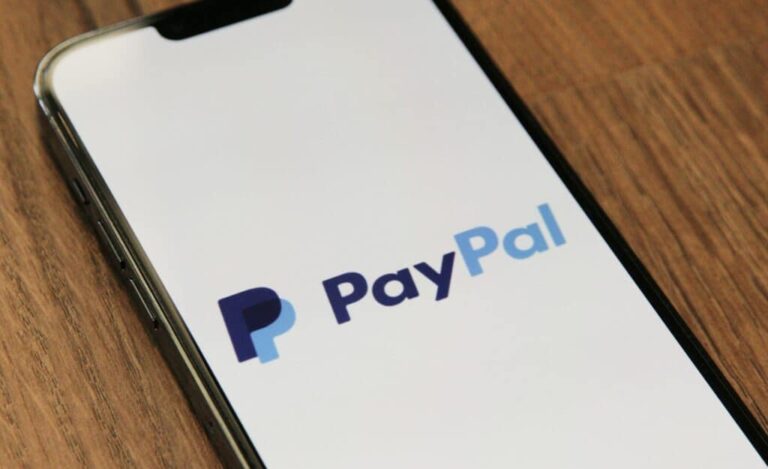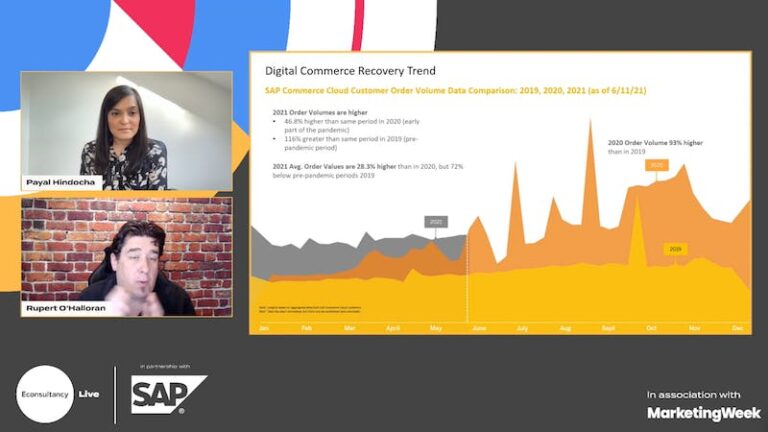“Attribution modeling analyzes every single step a user took before conversion and assigns value to each individual marketing step along the way,” says Juan Lozano, Sr. Data Scientist at Tinuiti.
While attribution models need data in order to function, there are some attribution models that heavily leverage data in order to convey their findings using statistical techniques such as predictive analytics and machine learning.
All brands, large and small, face unique business challenges caused by loops in marketing data.
This model cannot track the entire customer journey. Some marketers replace this attribution model with others, like first-click or time-decay models. However, these models often only track specific steps in the customer journey as well.
Here’s a look at today’s popular data attribution models, how to decide which model is right, and some tips from our experts.
How Can Attribution Modeling Impact ROI?
OPTIMIZE: Mobius Apps work within MobiusOS to provide targeted analytics products that allow us to enhance and customize the way your data is analyzed to uncover growth opportunities with cutting-edge insights. We can even create bespoke apps, just for you.
Data attribution is specifically tailored to track and monitor your marketing performance, and factor in your business goals.
Want to learn more about Mobius? Check out our recent announcement.
— Annica Nesty, Senior Director of Marketing Sciences at Tinuiti
Unlike strictly rule-driven attribution models, our scientific and data-driven attribution uses a combination of multiple models (including time series) in conjunction with Markovian machine learning to evaluate all the converting and non-converting paths across your marketing mix and identifies the proper credit for each interaction. Data attribution can help businesses:
- Improve the customer experience by understanding which channels are most effective for acquisition vs. retention campaigns
- Invest in channels that have a high sales contribution and spend less on channels with lower sales contribution
- Optimize marketing spend to increase conversions and ROI by identifying each channel’s role in driving sales
A highly-adaptable model that analyzes your past touchpoints and sales to see which actions and digital asset completions are strong indicators of future revenue.
ACTIVATE: MobiusX is our powerful AI-enabled eCommerce activation toolset that uses product data as the foundation on which your media, bid, and feed strategies are optimized across campaigns for maxim profitability.
2. Common Misconceptions About Data Attribution
“Multi-touch or multi-channel attribution modeling can be used to improve ROI by showing which channels or campaigns are most effective at driving conversions, allowing marketers to strategically manage their marketing spend across channels/campaigns with deep channel performance insights.”
Attribution models allow you to understand the complex factors that determine which channels receive credit for driving online and in-store sales.
“Choosing the right method is dependent on the business or project objectives and the data that is available. The best solution is inclusive of all marketing channels and is representative of all the channels consumers engage with across their sales journey,” explains Nesty.
Replacing Last-Click With Other Models Will Solve All Your Problems
When thinking about attribution modeling spend, small to medium-sized organizations often think of big budgets or out-of-touch analytics solutions.
“Choosing the right method is dependent on the business or project objectives and the data that is available. For instance, rule-based models are simple and use predefined logic that may not be representative of your business,” explains Nesty.
Highly revenue-focused, time decay models attribute more weight to steps of the cycle that occur closer to the sale. If you have a lengthy lead-nurturing process or lots of touchpoints during the sale, it’s a great choice.
Attribution Models Are Only for Enterprise Businesses
Are you still relying on a one-size-fits-all approach for attribution modeling?
Attribution Modeling Is Guesswork
For example, based on the sequence of interactions we can weight the first touchpoint and the lead conversion touchpoint higher than all other touchpoints and then divided the remaining credit equally amongst remaining touchpoints in the middle of the conversion journey
A custom, multitouch attribution strategy is often the best solution for any attribution problem, as it allows you to track multiple touchpoints and study their impact.
They also reveal which channels are driving sales across specific customer segments, empowering you with the data you need to make decisions on redistributing your overall budget to secure more conversions.
3. Which Data Attribution Model Is Best?
Rules-based models as the name suggests quantifies credit based on a predefined set of rules as per channel or touchpoint sequence in the conversion journey. Here are some examples: UNIFY: MobiusOS connects, collects, and synthesizes your data in one place, with visualization, integrations, and reporting that makes your insights easy to understand and act on. Think of it as the operating system where all of your data lives.
Custom, multitouch data attribution models that understand the entire customer experience will give you long-term insights that allow for actionable results.
Attribution modeling provides the flexibility to respond to changes in channel performance and quickly change marketing strategy by investing more in top channels.
“At Tinuiti, we use statistical techniques such as data mining, predictive modeling, AI to understand future outcomes, create deeper insights, recommendations, and what-if scenarios. We compliment the insights team, working on tests and analyses. We expand those capabilities to build predictive analytics and advanced forecasting models,” explains Nesty.
“The benefits of attribution modeling are evident from day one and continue to provide marketing organizations with intelligence that surpasses the initial investment, delivering granular insights that highlight the effectiveness of your marketing programs,” says Nesty.
These models, however, are easy to apply and can expand the attribution view from single-touch attribution to multi-touch attribution. On the other hand, scientific or algorithmic or custom attribution models are data-driven and provide a custom view of your business.
- Define requirements for this analysis. Outline specific goals or objectives
- Analyze what data is available. Ensure available data provides an accurate view of consumers’ journeys and is representative of all marketing channels. Clean, compile and integrate data
- Explore and test various models to determine which best suits your business needs
- Implement robust and validated models that can be maintained on an ongoing basis to provide visibility into channel impact on sales
Many businesses, for example, rely solely on last-click conversion attribution types, which focuses solely on the very last step their customers took to convert, which doesn’t credit your other touchpoints in the process.
4. Multi-Touch and Multi-Channel Attribution Models
Here are some of the biggest misconceptions our team encounters around data attribution:
With these granular insights, a company can view holistically their consumer journeys as well as the sequence of interactions informing which channels are more effective across customer segments.
“Most consumers interact with multiple channels before they convert. This approach gives credit to each channel that was part of the journey, as well as a true picture of each channel’s marketing ROI,” says Nesty.
Single Touch Vs. Multi-Touch Models
Single-Touch
Receiving newsletter signups? You can weigh these values more than a blog link clicked, or a product viewed. After a sale is made, you can examine the data, and see how heavily each touchpoint influenced that conversion.
Multi-Touch
The position-based attribution model assesses your data and credits or weighs it according to predefined criteria.
Types of Multi-Touch Attribution Models
Rules-based vs. Data-Driven (Algorithm or Custom)
In fact, the more customized your data-attribution solution, the less uncertainty there will be.
Rules-based
“This helps brands understand what channels they should be investing in, how they should shift budgets (media mix), creating a high-level view of what channels are driving overall sales and ROI. It also helps create custom multi-channel attribution models to provide a more scientific view of how marketing efforts contribute to sales performance.”
Linear Model
Mobius is Tinuiti’s proprietary suite of marketing intelligence and media activation technology that empowers businesses and marketers to truly understand every data touchpoint—and what comes next. Don’t just look at a few facts and figures and hope for the best. Interpreting results based on poor data is bad for business—and your marketing dollars deserve better.
Position-based Attribution Model
Each model achieves its own specific set of goals and purposes for the digital assets that you are trying to track. From one-touch models to multi-touch models, data attribution can precisely identify how much a particular piece of creative influenced conversions or lead-generating behavior.
This accurate, powerful multitouch attribution solution demonstrated where certain channels were over- or under-invested, relative to last-click efforts. After these findings, the brand was able to pull on the media side of the business to drive higher profits.
After collection, we were able to stitch together the identity data in a privacy-safe and compliant method to finish the picture. Our custom solution involved combining over 25 different models in order to deploy an attribution strategy with high accuracy.
Time Decay Model
Taking a custom approach can assist you in dialing in an attribution model that is specific to your exact sales or lead-gen cycle. Custom attribution is best if you have many campaigns, many stages, as well as different buyer or lead segments.
5. Data-Driven Attribution Models
These are models usually algorithmic or custom.
Click here to learn more about how our Mobius platform helps brands build custom attribution models tailored to their business needs.
That’s why Mobius unites every single data touchpoint in one place, with three distinct products that help unify, optimize, and activate your performance marketing data unlike any other platform on the market:
Algorithmic or Custom Attribution Model
At Tinuti, we recently created a custom multitouch solution for one of our ecommerce clients. We collected data directly from their CRM, POS, and SMS systems, as well as from their site, media pixels, offline sales, and loyalty.
6. Why Multi-Touch Attribution Is The Future
However, attribution modeling can be deployed for any business type and size with the right tools. Tinuiti’s Analytics team specializes in building custom attribution models for businesses of all sizes.
Is the simplest of the multi-touch attribution models. It distributes credit by evenly applying credit to every single touch in the buyer journey prior to a purchase or acquisition of the customer.
“Attribution can identify what marketing channels are more impactful in the conversion process, this will reduce the cost of acquiring a new customer by optimizing the spends along the journey to conversion,” says Lozano.
They are more complex as they require using scientific methods to determine the fractional weight of each channel contribution to the conversion.
There is no one-size-fits-all data attribution model that is best for everything.
The key difference between the 2 types of models is how the sales credit per channel in the sale cycle is quantified.
With these numerous touchpoints, do you really know which creative spurned action? Marketers must customize their messages and use data to meet their audience on the right platform at the right time. Multi-touch attribution models help you acquire that data to continue optimizing your funnels.
Nesty suggests the following four-step framework to help you identify which model is best for your situation:
The growing popularity of data attribution models has also brought on many conceptions about how they work.
Mobius: Technology That Closes the Loop on Your Marketing Performance
Let’s say you’re a B2B organization. An interested party signs up for your newsletter, and they visit the in-email landing page. After browsing the landing page, they download your content. You remarket to them, and eventually, you have a call and are able to land a new account. Seems straightforward, right? Well, consider too that you tried marketing to them on social media, using retargeting display ads.
Last-click attribution tracks the last customer action taken before conversion and is by far the most popular attribution model.
Find an attribution model that can implement different tools like machine learning, algorithms, or artificial intelligence in order to effectively track your spend.
After assessing the data, the solution uses statistical methods such as Markov to quantify the fractional credit per channel and extrapolates and creates rules for how revenues are assigned to specific touchpoints moving forward. If you have lots of customers, campaigns, channels, and creative, consider using an algorithmic attribution model to track your data.
Single-Touch attribution assigns 100% of the sale credit to a single channel or touchpoint, rather than every touchpoint that was part of the sale cycle. For example, first- and last-touch attribution. As their names suggest, these two single-touch attribution models track the first marketing effort that drove someone to your website or the last marketing effort that drove someone to complete a conversion, as the only drivers to that sale.
Multi-Touch or Multi-Channel attribution tracks sales and revenue back to each touchpoint along the customer journey. It provides a more realistic view of consumers’ activity in their path to conversion. Using data, you can determine how your marketing efforts convert a lead into a sale, as well as which channels or parts of the funnel provide you with your highest sales or best-qualified leads, helping you set better benchmarks, budgets, and optimization strategies.





